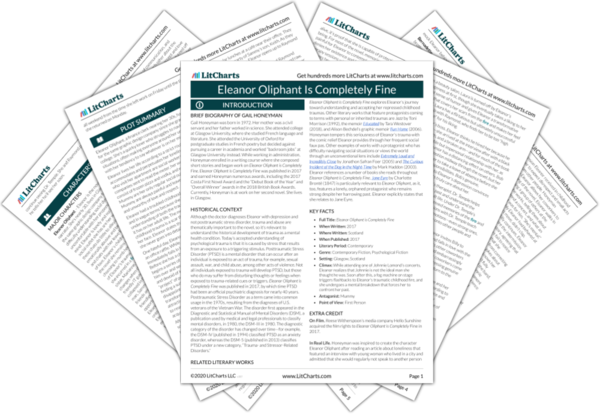That talking about Mummy to others “wasn’t a mistake you made twice” seems to insinuate that Mummy had previously punished Eleanor for disclosing unsavory details about their home life. This perhaps implies that Mummy was physically, as well as emotionally, abusive. Once Temple forces Eleanor to confront this memory of talking about Mummy with the teacher, Eleanor breaks down, feeling all the pain she has tried to suppress.
